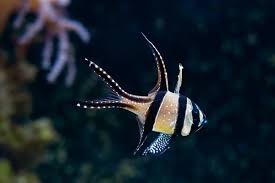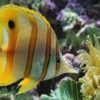The Dragon in Chinese Mythology: A Symbol of Resurrection and Rebirth
The dragon, a majestic and powerful creature, holds a prominent place in Chinese mythology. Revered as a symbol of strength, authority, and fortune, the dragon also embodies deeper concepts such as resurrection and rebirth. In Chinese culture, dragons are not only mythological figures but also symbolic representations of cosmic forces, spiritual renewal, and the cyclical nature of life. This article delves into the significance of the dragon in Chinese myths, particularly its association with resurrection and rebirth, and how these concepts are interwoven into various mythological stories, cultural practices, and beliefs.
1. The Dragon as a Symbol of Life Cycles and Rebirth
In Chinese culture, the dragon is often associated with cycles of life and death, symbolizing the perpetual nature of existence. Unlike the Western dragon, which is typically seen as a dangerous and destructive force, the Chinese dragon embodies a positive, regenerative energy. This regenerative force is often tied to the elements and the natural world, where dragons are believed to have the ability to influence the flow of life and bring about renewal and growth.
1.1 Dragon as a Representation of the Cosmos
Chinese dragons are often depicted as beings of great power, having dominion over natural forces such as the weather, rivers, and seasons. These natural forces are essential for life on Earth, and the dragon’s control over them allows it to bring about rebirth through renewed seasons and fertility. In this way, the dragon symbolizes the life cycle—from creation to destruction and back again. It represents the constant renewal of life, where even after destruction, the forces of nature will regenerate, ensuring the continuity of life.
1.2 Dragons and the Cycle of Seasons
One of the most significant ways in which dragons symbolize rebirth in Chinese mythology is through their connection to the changing seasons. In many myths, dragons are believed to control the rain and water, both of which are crucial for the fertility of the land and the renewal of life. The changing seasons represent the cycles of life: spring brings new growth, summer represents flourishing life, autumn marks maturity and reflection, and winter symbolizes death or dormancy. However, spring heralds the return of life and new beginnings, an ever-recurring cycle that is closely tied to the dragon’s power.
1.3 Dragon as the Guardian of Immortality
In Chinese philosophy and mythology, dragons are not merely symbols of death and rebirth, but also of immortality. They are often considered the keepers of life force and immortality elixirs. This is evident in the story of the Pill of Immortality, which is said to have been guarded by the dragon. By consuming this pill, one would achieve eternal life. This myth highlights the dragon’s connection to eternal renewal, symbolizing the belief that life, in its purest form, is ever-continuing and ever-renewing.
2. Mythical Tales of Resurrection and Rebirth Involving Dragons
Chinese mythology is rich with stories where dragons play an essential role in resurrection and rebirth. These legends reflect deep cultural beliefs about the regeneration of life, the power of nature, and the eternal struggle between life and death.
2.1 The Myth of the Dragon Gate
One of the most well-known legends in Chinese culture about resurrection and rebirth is the Dragon Gate myth. According to the tale, there is a magical gate located at the Dragon’s Gate waterfall. Fish that swim through the waterfall can transform into dragons if they pass through the gate. The story represents the transformation of a humble, ordinary creature into a majestic, powerful dragon, symbolizing rebirth and evolution. The fish’s journey to becoming a dragon is a metaphor for spiritual transformation, with the waterfall symbolizing the challenges and hardships that must be overcome to reach a higher state of being. This story is often interpreted as a metaphor for personal growth, where individuals undergo struggles or challenges that ultimately lead to renewal and self-improvement.
2.2 The Dragon and the Phoenix: Rebirth through Harmony
In Chinese mythology, the dragon is often paired with the phoenix, another symbol of rebirth. The phoenix represents the cycle of death and resurrection—it burns itself and is reborn from its own ashes. Similarly, the dragon’s ability to renew and regenerate the world through water and rain mirrors the phoenix’s rebirth from fire. Together, the dragon and phoenix represent the harmony of opposites and the balance between life and death. The pairing of these two creatures also symbolizes the rebirth of a new order and a renewed world after destruction.
2.3 The Resurrection of the Dragon King
Another story that highlights the dragon’s association with resurrection is the tale of the Dragon King, who was once defeated and banished by the Jade Emperor. However, through the efforts of a devoted follower, the Dragon King was able to regenerate and rise again, even more powerful than before. The resurrection of the Dragon King reflects the concept of recovery after loss, the power of perseverance, and the idea that life continues despite the forces of death and destruction. This tale is a reflection of the belief in life’s ability to regenerate and overcome adversities.
3. Dragons and the Concept of Rebirth in Chinese Festivals
Dragons are not only symbols of rebirth in mythology but are also central to Chinese festivals that celebrate the cycles of life. These festivals often revolve around themes of renewal and celebration of life, much like the concept of resurrection.
3.1 The Chinese New Year
The Chinese New Year (春节, Chūn Jié) is a time when people celebrate the rebirth of the new year and wish for prosperity and good fortune. Dragons play a central role in the celebration of the Spring Festival, especially through the Dragon Dance. This dance, performed during parades and celebrations, symbolizes the renewal of the year’s energies, bringing life to the community through the dragon’s movements. The performance is thought to ward off evil spirits, which is a metaphor for clearing away negativity and making space for the rebirth of good fortune and joy in the new year.
3.2 The Lantern Festival
The Lantern Festival, which marks the end of the Chinese New Year celebrations, is also associated with rebirth and renewal. During this festival, dragon lanterns are paraded through the streets, representing the energy of the dragon and its connection to fertility and growth. The light of the lanterns represents hope and a new beginning after the long winter months. The use of dragons in this festival signifies the return of light and life, mirroring the mythical cycles of resurrection and rebirth in Chinese mythology.
4. The Dragon’s Role in Shaping Chinese Spirituality and Rebirth
In Chinese spirituality, dragons are often seen as intermediaries between the earthly realm and the divine. Their ability to traverse the boundaries between different realms symbolizes their role in both life and death. Dragons are believed to have the power to guide souls through the afterlife, assisting in their rebirth in the next life.
4.1 Dragons in Taoist Beliefs
In Taoism, the dragon represents the flow of Qi, or life energy, that permeates the universe. The dragon’s power over water and the elements is symbolic of its ability to flow through all things, sustaining and renewing life. In Taoist practices, the dragon is often used to represent the process of spiritual rebirth—the idea that through balance, harmony, and renewal, one can reach spiritual enlightenment.
Conclusion
The dragon holds a significant place in Chinese mythology, representing the forces of nature, the cycle of life and death, and the concept of resurrection and rebirth. Through its association with the changing seasons, its role in ancient myths, and its symbolic presence in festivals, the dragon embodies renewal, growth, and immortality. The dragon’s power to regenerate and its ability to symbolize spiritual transformation serve as a reminder of the cyclical nature of existence and the eternal possibility of rebirth. Whether in mythological stories or cultural traditions, the dragon remains a central figure that continues to inspire ideas of renewal, hope, and resilience in Chinese culture.

